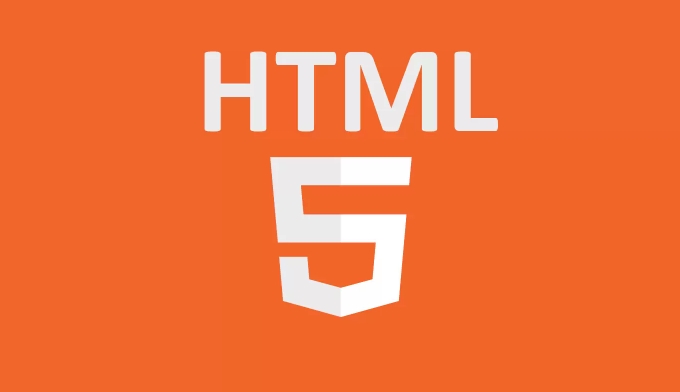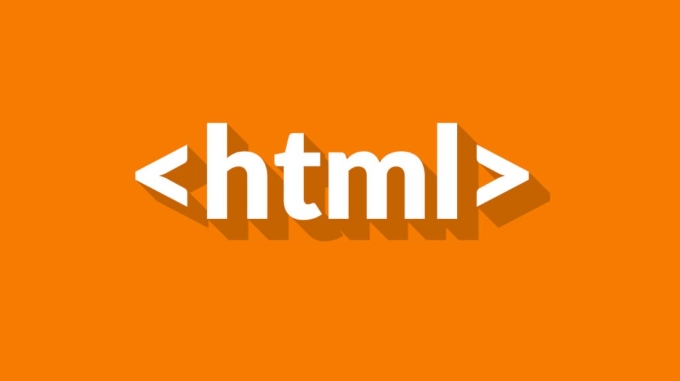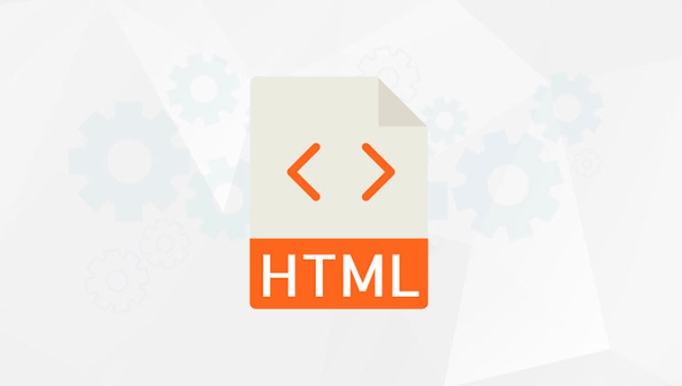HTML provides a variety of input types to meet different user input needs. 1. Common text input types include text, password, email, number, tel and url, which are suitable for input in various text and formats. 2. The input types related to time and date are date, time, datetime-local, month and week, providing a date selector to improve accuracy. 3. Select the class input type. The input type includes checkbox, radio, file and range, which are used for multiple selection, multiple selection, file upload and sliding adjustment. 4. Other practical types such as search, color, hidden and submit/reset/button are used for search boxes, color selection, hidden data transfer and form operation triggering respectively. Reasonable selection of these types can optimize user experience and data processing efficiency.

HTML provides a variety of input types for creating different user input fields in web forms. Each type determines the behavior, appearance, and what input is allowed. Choosing the right input type not only improves the user experience, but also helps the browser better handle data verification and interaction.

1. Common text input types
These are the most basic and common input types, suitable for receiving user text input:
- text : Used to enter single-line text, such as username, title, etc.
- password : Used when entering a password, the characters will be displayed in asterisks or dots.
- email : specially used to enter email addresses and supports automatic verification format.
- number : Only numbers are allowed to be entered, and the minimum value (min), maximum value (max) and step can be set.
- tel : Used to enter a phone number, different virtual keyboards may pop up on different devices.
- url : is used to enter the URL and also performs basic format verification.
These types of inputs are text input methods that are directly targeted to users, but each has different limitations and optimization scenarios.

2. Time and date-related input types
If you need the user to enter a time, date, or a combination of both, you can use the following types:
- date : Select the full date (year, month, day).
- time : Select only time (hours and minutes).
- datetime-local : Select date and time, not including time zone.
- month : Select year and month.
- week : Choose a week of the year.
These inputs are usually displayed as a date selector control in modern browsers, which facilitates precise selection by the user and reduces the possibility of manual input errors.

3. Select the class input type
This type of input is mainly used to allow users to choose from multiple options:
- checkbox : Multiple selection boxes, users can select multiple options.
- radio : radio buttons, only one option can be selected in a group.
- file : Allows users to upload files, which are often used for submissions such as pictures and documents.
- range : Sliding bar, suitable for adjusting continuous values ??such as volume and brightness.
When using these types, it is recommended to use the <label></label> tag to enhance clickable areas and semantic clarity.
4. Other practical input types
There are also some less common but useful input types:
- search : used for search boxes, visually similar to text, but has clear buttons in some browsers.
- color : Color selector, allowing users to select a color value.
- hidden : Hide fields, not displayed on the page, but data can be passed when the form is submitted.
- submit / reset / button : used to trigger form operations. Although it is not the type of input data, it is also part of input.
These types are very useful in specific scenarios, such as color that can quickly implement theme color selection.
Basically these common HTML input types. Although it seems a lot, it is not complicated to choose the right type according to actual needs. The key is to consider more user input habits and browser support during the development process.
The above is the detailed content of What are the different input types in HTML?. For more information, please follow other related articles on the PHP Chinese website!

Hot AI Tools

Undress AI Tool
Undress images for free

Undresser.AI Undress
AI-powered app for creating realistic nude photos

AI Clothes Remover
Online AI tool for removing clothes from photos.

Clothoff.io
AI clothes remover

Video Face Swap
Swap faces in any video effortlessly with our completely free AI face swap tool!

Hot Article

Hot Tools

Notepad++7.3.1
Easy-to-use and free code editor

SublimeText3 Chinese version
Chinese version, very easy to use

Zend Studio 13.0.1
Powerful PHP integrated development environment

Dreamweaver CS6
Visual web development tools

SublimeText3 Mac version
God-level code editing software (SublimeText3)

Hot Topics
 How does React handle focus management and accessibility?
Jul 08, 2025 am 02:34 AM
How does React handle focus management and accessibility?
Jul 08, 2025 am 02:34 AM
React itself does not directly manage focus or accessibility, but provides tools to effectively deal with these issues. 1. Use Refs to programmatically manage focus, such as setting element focus through useRef; 2. Use ARIA attributes to improve accessibility, such as defining the structure and state of tab components; 3. Pay attention to keyboard navigation to ensure that the focus logic in components such as modal boxes is clear; 4. Try to use native HTML elements to reduce the workload and error risk of custom implementation; 5. React assists accessibility by controlling the DOM and adding ARIA attributes, but the correct use still depends on developers.
 Describe the difference between shallow and full rendering in React testing.
Jul 06, 2025 am 02:32 AM
Describe the difference between shallow and full rendering in React testing.
Jul 06, 2025 am 02:32 AM
Shallowrenderingtestsacomponentinisolation,withoutchildren,whilefullrenderingincludesallchildcomponents.Shallowrenderingisgoodfortestingacomponent’sownlogicandmarkup,offeringfasterexecutionandisolationfromchildbehavior,butlacksfulllifecycleandDOMinte
 What is the significance of the StrictMode component in React?
Jul 06, 2025 am 02:33 AM
What is the significance of the StrictMode component in React?
Jul 06, 2025 am 02:33 AM
StrictMode does not render any visual content in React, but it is very useful during development. Its main function is to help developers identify potential problems, especially those that may cause bugs or unexpected behavior in complex applications. Specifically, it flags unsafe lifecycle methods, recognizes side effects in render functions, and warns about the use of old string refAPI. In addition, it can expose these side effects by intentionally repeating calls to certain functions, thereby prompting developers to move related operations to appropriate locations, such as the useEffect hook. At the same time, it encourages the use of newer ref methods such as useRef or callback ref instead of string ref. To use Stri effectively
 Vue with TypeScript Integration Guide
Jul 05, 2025 am 02:29 AM
Vue with TypeScript Integration Guide
Jul 05, 2025 am 02:29 AM
Create TypeScript-enabled projects using VueCLI or Vite, which can be quickly initialized through interactive selection features or using templates. Use tags in components to implement type inference with defineComponent, and it is recommended to explicitly declare props and emits types, and use interface or type to define complex structures. It is recommended to explicitly label types when using ref and reactive in setup functions to improve code maintainability and collaboration efficiency.
 How to handle forms in Vue
Jul 04, 2025 am 03:10 AM
How to handle forms in Vue
Jul 04, 2025 am 03:10 AM
There are three key points to be mastered when processing Vue forms: 1. Use v-model to achieve two-way binding and synchronize form data; 2. Implement verification logic to ensure input compliance; 3. Control the submission behavior and process requests and status feedback. In Vue, form elements such as input boxes, check boxes, etc. can be bound to data attributes through v-model, such as automatically synchronizing user input; for multiple selection scenarios of check boxes, the binding field should be initialized into an array to correctly store multiple selected values. Form verification can be implemented through custom functions or third-party libraries. Common practices include checking whether the field is empty, using a regular verification format, and displaying prompt information when errors are wrong; for example, writing a validateForm method to return the error message object of each field. You should use it when submitting
 Server-Side Rendering with Next.js Explained
Jul 23, 2025 am 01:39 AM
Server-Side Rendering with Next.js Explained
Jul 23, 2025 am 01:39 AM
Server-siderendering(SSR)inNext.jsgeneratesHTMLontheserverforeachrequest,improvingperformanceandSEO.1.SSRisidealfordynamiccontentthatchangesfrequently,suchasuserdashboards.2.ItusesgetServerSidePropstofetchdataperrequestandpassittothecomponent.3.UseSS
 A Deep Dive into WebAssembly (WASM) for Front-End Developers
Jul 27, 2025 am 12:32 AM
A Deep Dive into WebAssembly (WASM) for Front-End Developers
Jul 27, 2025 am 12:32 AM
WebAssembly(WASM)isagame-changerforfront-enddevelopersseekinghigh-performancewebapplications.1.WASMisabinaryinstructionformatthatrunsatnear-nativespeed,enablinglanguageslikeRust,C ,andGotoexecuteinthebrowser.2.ItcomplementsJavaScriptratherthanreplac
 What is content security policy CSP
Jul 04, 2025 am 03:21 AM
What is content security policy CSP
Jul 04, 2025 am 03:21 AM
Content Security Policy (CSP) prevents attacks such as XSS by limiting the loading source of web page resources. Its core mechanism is to set a whitelist to prevent unauthorized scripts from being executed. The steps to enable include: 1. Define the policy and clarify the allowed resource sources; 2. Add Content-Security-PolicyHTTP header to the server; 3. Use Report-Only mode to test and debug in the initial stage; 4. Continuous monitoring and optimization strategies to ensure that they do not affect normal functions. Notes include handling inline scripts, careful use of third-party resources, compatibility support, and other irreplaceable security measures.






